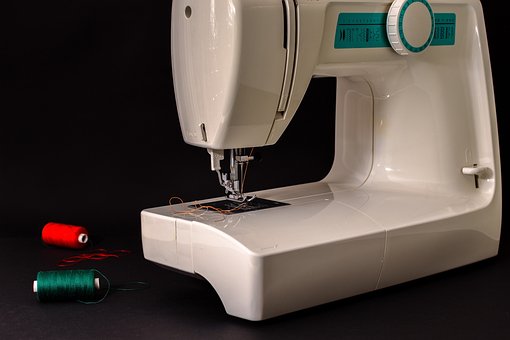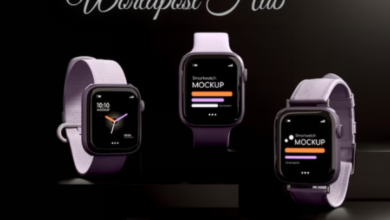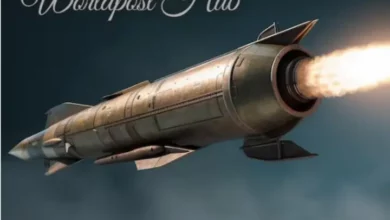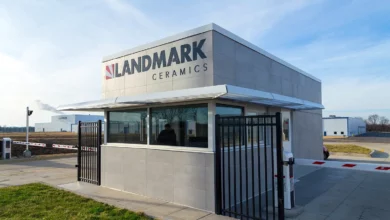Types and Features of Sewing Machines

There are many types and features available for sewing machines today. You can choose from a handheld, an electronic, or even a machine with a cover stitch and overlock.
Handheld Sewing Machines
Handheld sewing machines are a great help when it comes to repairing and mending things around the house. They are lightweight, portable, and can be operated with just a single hand. Some handheld models even include thread snips and a measuring tape.
The good news is that handheld sewing machines are able to handle everything from light fabrics to denim. You can even use them to stitch curtains. To get the most from the machine, you will need to be familiar with its most basic functions.
Read More: How to check nagad account number
One of the easiest things to do is to thread the needle. There is also an external bobbin, which makes it easy to change the thread. A rotary wheel may come in handy when you are pulling the thread.
You can save time and money by using a handheld sewing machine. They are also great for traveling. If you are a frequent traveler, you will definitely appreciate the ease and portability of this sewing device.
Another advantage of handheld sewing machines is the small size. This means that they can fit into your purse or car. The device is also relatively affordable. Many of these devices are available for as low as $50.
Singer is a trusted manufacturer of top-quality handheld sewing machines. These machines include a thread snipper and measuring tape as well as spools for thread.
Other features include a built-in winding pole and a cuff slot. Even the battery-operated model comes with a decent amount of features.
Overlock Sewing Machine
An overlock sewing machine can be described as a type of serger. This machine can create decorative stitches, gathers, and ruffles. It can also protect the edges of the fabric. The stitches are formed by threads that are looped into interlocking shapes. These stitches have a built-in stretch that makes them great for seaming knitted fabric.
There are several different kinds of overlock sewing machines. Some have automatic threading. Some are manual. Depending on the model, you can choose between three or four threads.
Choosing the right overlock machine depends on what you plan to use it for. If you plan to sew woven fabrics, you may want to get a four-thread model. On the other hand, if you have a lightweight fabric, you may want to select a two-thread overlock.
Regardless of what you’re planning to do, you should look for an overlock sewing machine that has a low price. It is also a good idea check the warranty. You might even want to test several models before you make your final decision.
If you are just starting out with sewing, you may want to choose an overlock sewing machine that is easy to operate. It is recommended that you visit a dealer and ask for lessons before buying one. Also, be sure to see if the dealer provides service and maintenance.
When choosing a model, you should also consider the number of needles. Some models have four needles while others have eight. Each machine can have a different number of stitches per inch.
Lock Stitch Sewing Machine
A lock stitch on a sewing machine is one of the most common mechanical stitches. It is an essential part of any sewing machine. It provides a neat finish to both the front and the back of the seam.
Lock stitches are made by threading a thread through a needle and then tying the ends together. This keeps the threads secure in the fabric. A lock stitch can be either manual or automatic depending on the type of sewing machine.
There are many different straight stitches. Some are shorter and others are longer. The type of straight stitch used depends on the material and the intended application. A chain stitch is better for tight seams. If you are working with sheer fabrics, a lock stitch with a built in lock will keep your work’s edges looking clean.
Lock stitch sewing machines are typically industrial sewing machines. You can adjust the length and speed of the stitch.
Many newer electronic sewing machines have the option of a lock stitch feature. These stitches allow you to sew one stitch in each direction. The reverse stitch is the same. These stitches are particularly useful for quilters and other users who use sheer fabric.
To use a lock stitch on a sewing machine, you need to choose the correct stitch setting and start with a small stitch. Sewing more than two or four on the spot can cause a thread knot to form, and can also jam the machine.
Cover stitch
A cover stitch is a great way to finish off your clothing hems and linings. This stitching technique is similar to a serger stitch but without the elasticity and the puckering of the latter. This stitching technique produces a professional result.
A cover stitch machine can be used for a number of tasks, but one of the most common is hemming. Coverstitch machines can be used to hem pants, shorts, and other garments.
It can be especially useful when sewing knits since this stitch can help maintain the fabric’s stretch. Cover stitching can help prevent raveling. Coverstitch machines can also be used for decorative top stitching or attaching binding.
Although this stitch is more complex than other techniques, it is simple to use. Many cover stitch machines come with special threading tools. You can either use regular domestic Sewing Master machine threads or a wooly nylon thread, which adds elasticity to fabric seams.
One of the best features of a cover stitch machine is its free arm. This makes it easier to hem narrow tubes and curves.
Another feature of a cover stitch is the ability to sew multiple stitched lines at once. Coverstitch machines typically use two top threads as well as one looper thread. Some cover stitches allow you to use five or more threads.
Make sure to get a machine with a high stitch count when buying a cover stitch. Also, consider if you need a special hem guide to avoid uneven hemming.
Buttonhole Sewing Machine
A buttonhole sewing machine can be used in several ways to sew a buttonhole. The zigzag stitch and chain stitch are the most common. You can also make buttonholes manually or automatically. Some models include a thread trimmer that can trim the threads while you sew.
Before you make your buttonholes, you should know how to use the machine’s features. Some models include an automatic button feeder that can feed a button into their machine. Others have a skip stitch detection device, which gives an alert when you miss a stitch. These features can help you create the perfect buttonhole.
A machine can also be equipped with a buttonhole foot. This type of presser foot lets you choose a width and depth for your buttonhole. You can also use it to make an in-seam buttomhole.
Heavy fabrics can make it difficult to get fabric through the machine. Interfacing can be used between layers of fabric to make it easier. This provides support and makes the buttonhole more flexible.
A fabric marking pen can also be used to mark the beginning and end of the buttonhole. You can also add a fabric stabilizer underneath the garment. If you’re unsure about how to do these steps, consult the owner’s manual.
If you have a heavy garment, you may want to adjust your thread tension. You should use the right size needle for your fabric.
Electronic Sewing Machine
Embroidery computerized sewing machines offer a variety of features to help you create new garment designs. These machines are usually more expensive than their mechanical counterparts. These devices require electricity to operate, so they need a reliable power supply. They also typically have an LCD screen to display the stitch length and tension.
Many computer-controlled sewing machines have a variety of built-in stitches. Others offer the user the option of downloading additional patterns. These machines are usually faster and easier to use than the manual ones.
The Singer ES-300 electronic sewing machine offers a range of stitch patterns and a reverse stitch option. It is lightweight and easy to transport.
The Brother ES-600EB electronic sewing machine offers an automatic thread rewind mechanism. It also comes with two thread spools and a needle-treader.
Another option is the Michley SS 602 Sew & Sew electronic sewing machine. It has 60 stitch functions and dual-speed adjustments.
It is important to check the motor before buying an electronic sewing machine. A stronger motor will give you better performance. Also, if you are using the machine on a thicker fabric, you might want a more powerful motor.
The Brother FS40 electronic sewing machine is designed for both beginners and more advanced sewers. The machine features automatic stitch selection technology, slide speed control, drop-feed for freehand sewing, and drop-feed for freehand stippling.
Also, a sewing machine cover is useful. The Singer 770 has a cover that fits over the device. The cover can also be used to store additional accessories such as thread spools and bobbins.





